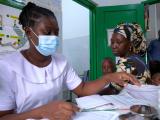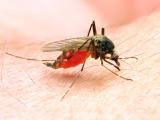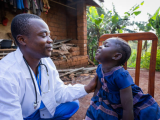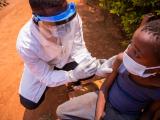May 15, 2012 (CIDRAP News) – Global health groups today unveiled a strategy to battle emerging insecticide resistance in malaria-carrying mosquitoes, a problem they say could be minimized or reversed now before resistance becomes established in mosquito populations.
The World Health Organization (WHO) and the Roll Back Malaria Partnership described a five-part plan to tackle insecticide resistance, based on a 2011 request from the World Health Assembly. The group that wrote the 132-page report consulted with more than 130 stakeholders, according to a statement today from the WHO.
Efforts to reduce the malaria burden since 2000 have cut deaths by a quarter globally and by a third in Africa, but mosquito resistance to insecticides, one of the lynchpins of disease control, has been detected in 64 countries with ongoing malaria transmission, a threat to progress in fighting the disease, the report said.
Margaret Chan, MD, WHO director-general, said in the introduction to the report, "The global malaria community takes this threat seriously. The Global Plan for Insecticide Resistance Management in malaria vectors (GPIRM) is evidence of a broad commitment to act before insecticide resistance compromises current vector control strategies."
She said the main factor that's driving resistance is overreliance on a single class of insecticide—pyrethroids—and in some areas, the use of insecticides in agriculture.
The report said vector control has relied on two key interventions, long-lasting insecticidal nets (LLIN) and indoor residual spraying (IRS), both of which have increased in use over the past decade as part of efforts to cover all populations that are at risk for malaria. WHO-approved products contain active ingredients from only four insecticide classes; all recommended LLINs are treated with pyrethroids, which health officials say are the best insecticides ever developed for public health use.
In most parts of the world, the insecticides are very effective, but the report says their potency can be preserved only with urgent and focused efforts from the global malaria community. Areas of particular concern are India and sub-Saharan Africa, where widespread reports of resistance, in some cases to all classes of insecticides, are occurring against a backdrop of high malaria transmission.
The authors of the report estimate that widespread resistance to pyrethroids would weaken vector-control efforts by 55%.
Insecticide-resistance management strategies could remove selection pressure or kill resistant mosquitoes by exposing them to multiple insecticides when they become available, according to the report.
The new strategy suggests that national and global health officials undertake the following five activities, or pillars:
- Plan and implement resistance management strategies in malaria-endemic countries.
- Ensure proper resistance monitoring and data management.
- Develop new vector-control tools.
- Fill gaps in knowledge about insecticide resistance mechanisms and management approaches.
- Ensure that financial and support mechanisms are in place.
For example, the report said rotation strategies could be used to preserve the effectiveness of pyrethroids. A reformulation of an existing active ingredient and an active ingredient "repurposed" from agricultural use are on the horizon, which should help with rotation strategies.
The price tag for implementation of all five parts of the plan will be about $200 million a year, the report predicts. That total includes implementing the strategies, capacity-building at the country level, research costs, investments in new vector-control products, and increased coordination at the global level.
The authors of the report see parallels between vector resistance to insecticides and malaria resistance to drugs. They noted that addressing drug resistance required the rapid development of new combination products and treatment policies. Now, the malaria community must tackle the threat of insecticide resistance, giving the highest health priority to coordinated, preemptive action to preserve vector susceptibility to insecticides, they wrote.
In a related development, British researchers have found a strain of the malaria parasite Plasmodium falciparum that is resistant to artemisinin, a key drug for treating malaria, in East Africa, according to a May 12 story in the East African, a newspaper based in Nairobi, Kenya. The strain was identified in blood samples from travelers who had been in Kenya, Tanzania, and nine other African nations.
The researchers said the findings suggest the strain has spread to East Africa or that the local parasite has developed resistance, according to the story.
Resistance to artemisinin was confirmed at the Cambodia-Thailand border in 2009, and suspected areas have been identified in the Greater Mekong region, but the findings haven't been confirmed, according to earlier reports.
Responding to worries about the spread of artemisinin-resistant malaria parasites and the threat they pose to the world's most potent tool for fighting the disease, the WHO released an earlier plan for containing resistance in January 2011.
See also:
Global Plan for Insecticide Resistance Management in Malaria Vectors
May 12 East African story
Jan 12, 2011, CIDRAP News story "WHO launches plan to contain drug-resistant malaria"


















